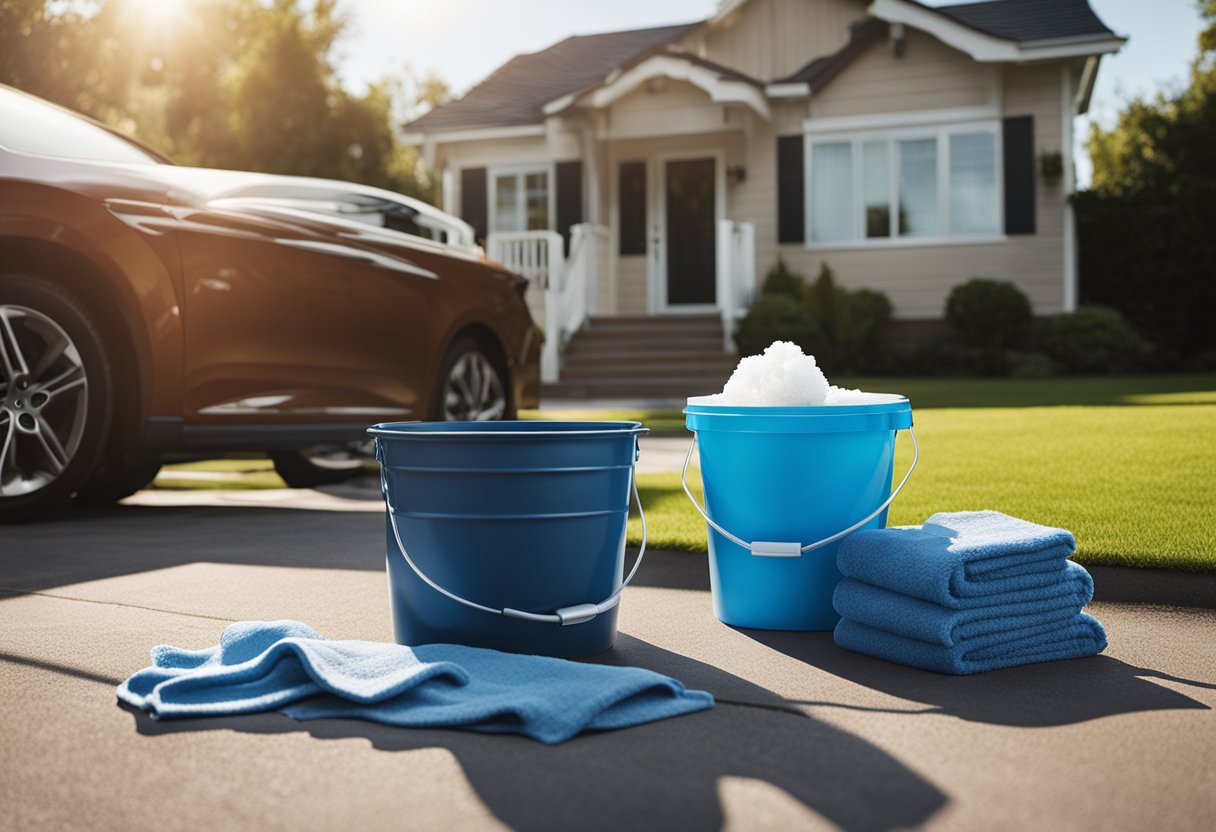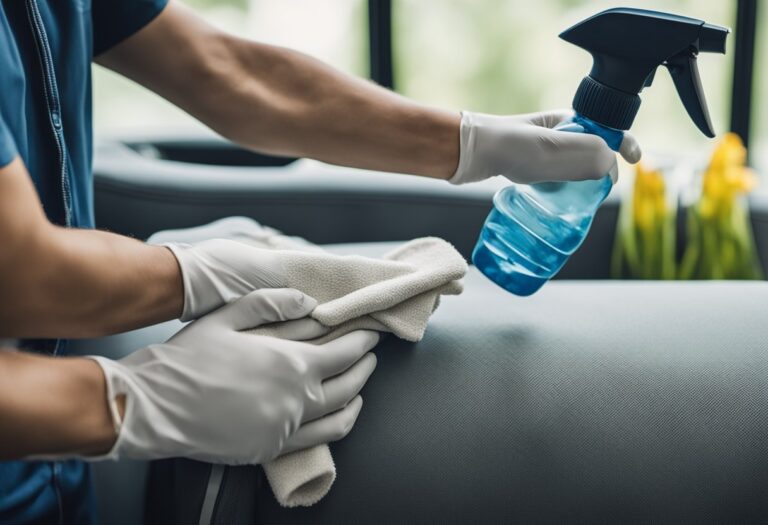Checklist for a DIY Car Detailing: Tips and Tricks
Car detailing can be an expensive affair if you decide to take your vehicle to a professional detailer. However, with the right tools and knowledge, you can achieve a showroom-quality finish on your own. DIY car detailing is not only cost-effective but also allows you to customize the process to your preferences. In this article, we will provide you with a comprehensive checklist to help you achieve a professional-looking detail job in the comfort of your own garage.

Before diving into the detailing process, it is crucial to prepare your vehicle properly. This involves gathering all the necessary tools and equipment, as well as cleaning the car’s exterior and interior. Proper preparation ensures that you don’t miss any spots during the detailing process and that you achieve the desired results. In this article, we will cover the necessary steps to prepare your car for detailing, including cleaning and organizing your tools and supplies.
Key Takeaways
- DIY car detailing can save you money and allow you to customize the process to your preferences.
- Proper preparation is crucial for achieving a professional-looking detail job.
- The checklist provided in this article covers all the necessary steps for a thorough DIY car detailing job.
Preparation

Gathering Supplies
Before starting a DIY car detailing project, it is important to gather all the necessary supplies. This includes car shampoo, microfiber towels, a bucket, a hose, a tire cleaner, a waxing pad, and a polishing compound. It is recommended to use high-quality products to ensure the best results.
Make sure to read the labels of the products carefully and follow the instructions for use. It is also important to wear gloves and protective eyewear while handling the chemicals to avoid any accidents.
Choosing the Right Location
Choosing the right location for car detailing is crucial. It is recommended to choose a shaded area with good ventilation to avoid direct sunlight and heat. This will prevent the cleaning solution from drying too quickly and leaving streaks on the surface.
If possible, choose a location with access to a power outlet and running water. This will make the cleaning process much easier and efficient.
Setting Up Your Workspace
Once the location has been chosen, it is time to set up the workspace. Start by removing any debris or clutter from the area. Then, place a tarp or plastic sheet on the ground to protect it from any spills or stains.
Next, fill a bucket with water and add the car shampoo according to the instructions. Place all the necessary supplies within reach, such as the microfiber towels, tire cleaner, waxing pad, and polishing compound.
By following these simple steps, you can ensure that your DIY car detailing project is a success.
Exterior Detailing

Washing the Body
Washing the body of a car is an important step in car detailing. It helps to remove dirt, grime, and other contaminants that may have accumulated on the surface of the car. To wash the body of a car, one should use a high-quality car shampoo and a soft sponge or wash mitt. It is important to avoid using harsh chemicals or abrasive materials that can damage the paint of the car.
Cleaning Wheels and Tires
Cleaning the wheels and tires of a car is another important step in car detailing. It helps to remove brake dust, grime, and other contaminants that may have accumulated on the surface of the wheels and tires. To clean the wheels and tires of a car, one should use a high-quality wheel cleaner and a soft brush. It is important to avoid using harsh chemicals or abrasive materials that can damage the wheels and tires of the car.
Polishing and Waxing
Polishing and waxing the car is an important step in car detailing. It helps to restore the shine and protect the paint of the car. To polish and wax the car, one should use a high-quality car polish and wax. It is important to follow the instructions on the product carefully and to avoid applying too much polish or wax.
Treating Windows and Mirrors
Treating the windows and mirrors of a car is an important step in car detailing. It helps to remove streaks and smudges and improve visibility while driving. To treat the windows and mirrors of a car, one should use a high-quality glass cleaner and a soft cloth. It is important to avoid using harsh chemicals or abrasive materials that can damage the glass of the car.
Interior Detailing

Vacuuming the Interior
The first step in interior detailing is to thoroughly vacuum the entire interior of the car. This includes the carpets, seats, and floor mats. Use a high-powered vacuum with attachments to get into all the nooks and crannies. Pay special attention to areas where dirt and debris tend to accumulate, such as under the seats and in the crevices of the dashboard.
Cleaning and Conditioning Seats
After vacuuming, it’s time to clean and condition the seats. Use a specialized cleaner that is appropriate for the type of material your seats are made of, such as leather or cloth. Apply the cleaner to the seats and use a soft-bristled brush to gently scrub away any dirt or stains. Once the seats are clean, apply a conditioner to help keep them soft and supple.
Detailing Dashboard and Console
The dashboard and console are often overlooked when it comes to detailing, but they are important parts of the interior that can accumulate a lot of dirt and dust. Use a microfiber cloth and a specialized cleaner to wipe down the dashboard and console, paying special attention to any buttons or knobs. Use a soft-bristled brush to get into any crevices or hard-to-reach areas.
Cleaning Windows and Mirrors Inside
The final step in interior detailing is to clean the windows and mirrors inside the car. Use a specialized glass cleaner and a microfiber cloth to wipe down all the windows and mirrors, making sure to remove any streaks or smudges. It’s important to use a cleaner that is specifically designed for glass, as using the wrong type of cleaner can leave behind a residue that is difficult to remove.
By following this checklist for interior detailing, car owners can keep their vehicle looking clean and well-maintained.
Final Touches

Deodorizing the Vehicle
After completing the car detailing process, it is important to deodorize the vehicle to ensure a fresh and pleasant smell. This can be achieved by using an odor eliminator spray or placing an air freshener inside the car. It is recommended to choose a scent that is not too overpowering and does not clash with the interior of the car.
Inspecting Your Work
Before considering the car detailing process complete, it is essential to thoroughly inspect the vehicle for any missed spots or areas that require further attention. This includes checking the exterior and interior of the car, as well as the engine bay and undercarriage. Any missed spots should be addressed immediately to ensure a flawless finish.
Maintaining Car Detailing Tools
Proper maintenance of car detailing tools is crucial to ensure their longevity and effectiveness. After each use, it is recommended to clean the tools thoroughly and store them in a dry and secure place. It is also important to periodically inspect the tools for any signs of wear and tear and replace them if necessary.
Following these final touches will ensure that the DIY car detailing process is complete and the vehicle looks and smells brand new.
Frequently Asked Questions

What steps should I include in my interior car detailing checklist?
When creating an interior car detailing checklist, it’s important to start with the basics. Begin by removing all trash, debris, and personal items from the car. Next, vacuum all surfaces, including the seats, carpets, and floor mats. Wipe down all hard surfaces, such as the dashboard, door panels, and center console, with a damp microfiber cloth. Finally, clean the windows and mirrors with a streak-free glass cleaner.
What are the essential tools and supplies needed for DIY car detailing?
To effectively detail your car, you’ll need a variety of tools and supplies. Some essential items include microfiber towels, a vacuum cleaner, a bucket, car wash soap, a foam cannon, a pressure washer, and a selection of brushes and sponges. You may also want to invest in a clay bar kit, a polishing compound, and a wax or sealant for the exterior.
How can I create a comprehensive exterior car detailing checklist?
When creating an exterior car detailing checklist, it’s important to focus on the details. Begin by washing the car thoroughly, using a foam cannon and high-pressure washer to remove dirt and grime. Next, use a clay bar to remove any contaminants from the paint. Polish the paint with a compound to remove scratches and swirl marks, then apply a wax or sealant to protect the finish. Finally, clean the wheels and tires, and apply a tire shine for a finishing touch.
What is the proper sequence of tasks for effective DIY car detailing?
The proper sequence of tasks for DIY car detailing depends on the specific needs of your vehicle. However, a general guideline is to start with the interior, then move on to the exterior. Within each category, begin with the most basic tasks, such as removing debris or washing the car. Then move on to more detailed tasks, such as polishing or waxing.
Which techniques are best for DIY detailing of car upholstery and carpets?
When detailing car upholstery and carpets, it’s important to use the right techniques and products to avoid damage. Start by vacuuming the surfaces thoroughly. Then, use a specialized cleaner designed for car upholstery, such as a foam or spray cleaner. Use a soft-bristled brush to gently scrub the surfaces, then wipe away the cleaner with a microfiber towel. For tough stains, you may need to repeat the process or use a specialized stain remover.
How often should I perform a full DIY car detailing to maintain my vehicle?
The frequency of DIY car detailing depends on a variety of factors, such as the climate, driving conditions, and personal preferences. As a general guideline, it’s recommended to perform a full detailing at least twice a year, or more frequently if your car is exposed to harsh conditions or heavy use. Regular maintenance, such as washing and waxing, should be performed more frequently, such as once a month.






